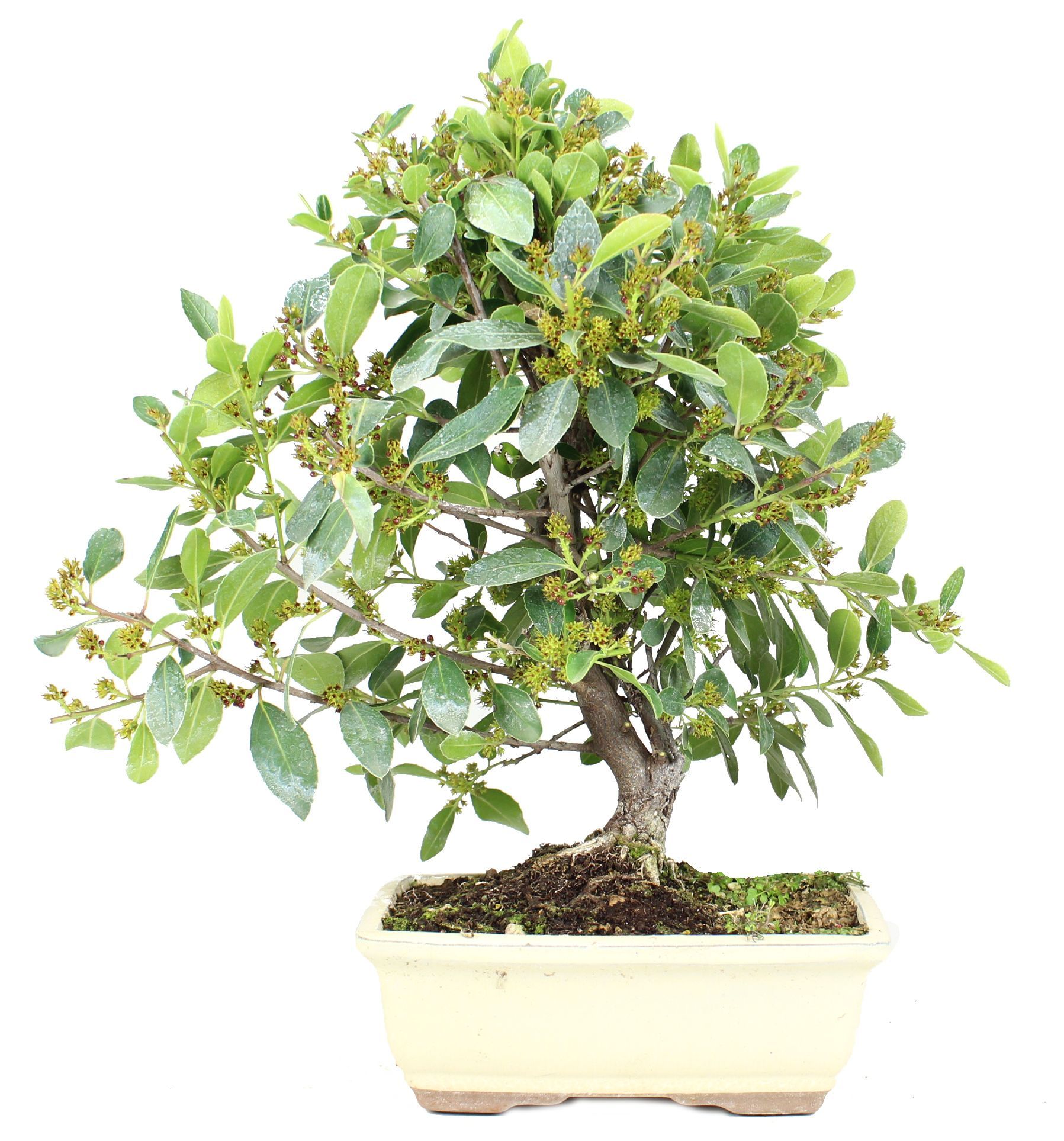Characteristics
The Mediterranean Buckthorn is a bush with very variable appearances, since it sometimes barely attains a span and other times reaches up to 8 meters high. Its greyish bark cracks with age. Its leathery leaves are dark green on the visible side and whitish on the underside. It blooms in spring and gives rise to fruits resembling red berries.
Location
Being a characteristic species of the Mediterranean area, place the bonsai outdoor or in semi-shaded places.
Watering
Shrub that needs a lot of humidity of its substrate, but that resists drought. We will water abundantly when we observe that the surface of the soil is dry.
Fertilization
From spring to mid-autumn with organic fertilizer or liquid NUTRIBONSAI from MISTRAL, applied every two weeks through irrigation water.
Re-potting
Every 2 or 3 years, in early spring, just a bit before the beginning of the annual budding. After transplanting it is convenient to water with a solution of VITABONSAI from Mistral Bonsai, to accelerate the recovery of the tree.
Substrate
A mixture of 6 parts of Akadama, with 4 parts of volcanic gravel can be used; otherwise Mistral Bonsai TERRABONSAI can also be used.
Pruning and pinching
Pruning
Pruning will be done in early spring.
Pinching
Throughout the growing season we can perform light pinching to get a denser crown.
Wiring
It is not a bonsai to which the wiring of its branches is practiced much. However, in case of doing so, it is advisable to do it before the sprouting.
Curiosities
This shrub is very suitable for hedgerows.
Its longevity is remarkable, since it can reach the hundred years.
The fruits are attributed laxative and astringent medicinal properties but, although they are very appreciated by birds, it is advisable to be very cautious because they are in fact slightly toxic for humans.

